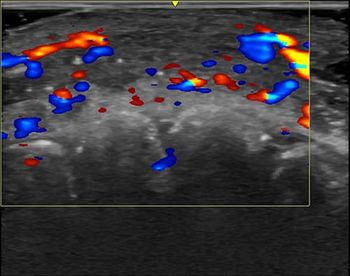
Diagnostic Imaging in ED Varies for Adults with Suspected Appendicitis
The first choice for imaging adult patients with suspected appendicitis varies according to patient demographics and resource availability.
Use of imaging modalities in the emergency department to assess suspected appendicitis in adults in the emergency room varies, according to a study published in
Researchers from Canada sought to determine how adult patients with suspected appendicitis are assessed in emergency departments at a number of Canadian academic centers.
Questionnaires were sent to 17 participating centers, requesting information on the modalities used in the emergency room and what influenced the decisions; collection took place over four months, ending February 2016. Sixteen (94%) of the 17 academic centers responded. The modality of use for all patients with suspected appendicitis included:
When CT was used to assess patients, 81% of the facilities used non-focused CT of the abdomen and pelvis, and 44% of centers used oral contrast. According to the results, 13 centers (81%) have ultrasound available 24 hours per day, seven days per week. At 12 centers (75%), ultrasound is performed by ultrasound technologists. Four centers (40%) perform MRI in suspected appendicitis in adult patients at the discretion of the attending radiologist. Eleven centers (69%) have MRI available 24/7. All 16 centers (100%) use unenhanced MRI.
The researchers concluded that despite North American guidelines and recommendations about use of multiple imaging modalities, there is still a variety in the modalities chosen by clinicians, depending on patient demographics and resource availability.
“Imaging trends in the use of the first-line modalities should be considered in order to plan for the availability of the imaging examinations and to consider plans for an imaging algorithm to permit standardization across multiple centers,” they wrote.
Newsletter
Stay at the forefront of radiology with the Diagnostic Imaging newsletter, delivering the latest news, clinical insights, and imaging advancements for today’s radiologists.




























